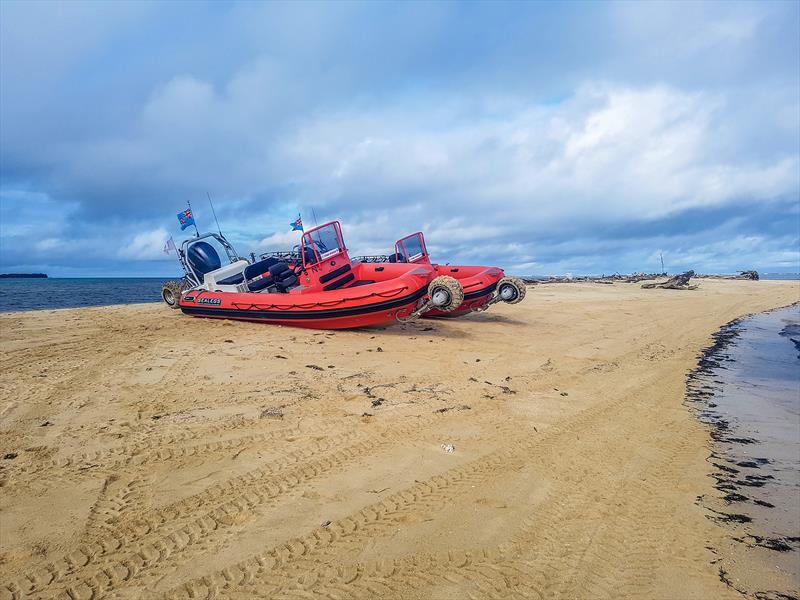
Pacific Island nations opt for Sealegs for rapid response and support
by Fiji Times/Sail-World.com/nz 2 Jul 2018 15:47 PDT
3 July 2018

Sealegs are proving to be ideal craft for the access to remote communities in Pacific Islands and have already been deployed aftre two Cyclones © Fiji Times
With the world, and certainly the Pacific experiencing more severe weather in recent years, thought is turning to aid responses to the change in the weather cycle.
While the number of weather incidents may not be increasing meteorology experts acknowledge that the severity of events is on the increase - due largely to rising sea temperatures which help storms grow into cyclones.
The issue is not confined to the Pacific, the Caribbean, West Indies and south eastern seaboard of USA face similar issues with increased storm intensity, damage and casualties.
Dealing quickly with the aftermaths of tropical depressions and even cyclones requires new thinking. Part of that new approach is acquiring versatile working vessels - which is where Sealegs comes in.
The amphibious RIB has the ability to come ashore in almost any environment, bringing aid, effecting rescue, working between large vessels and the shore or devastation assessment.
As well the Sealegs can operate at speed in relatively shallow water and quickly cover the distance between islands and communities.
One of the benefits of Sealegs is that the RIB's keep their payload dry - be it human or food or equipment - and don't require help from villagers to get on and off the shore. Climb aboard in the dry ashore and get off still dry onto an offshore vessel - or vice versa.
The rugged construction and large wheels allow the Sealegs to come ashore in even moderate surf and a variety of terrain.
However driving and maintaining the amphibious RIB is a skill, and that is where New Zealand's marine agencies have been providing assistance to Fiji's disaster response organisations and staff.
The first training session on Sealegs amphibious boats ended on Nukulau Island, near Fiji, in mid-June.
About 25 participating officials from the National Disaster Management Office (NDMO) took part in the week-long training that was designed to help officers obtain technical and maintenance knowledge on the Sealegs amphibious RIBs.
The training was conducted by representatives from the New Zealand Coast Guard and Maritime New Zealand.
NDMO technical advisor Gary Frost said there were participants from each division with one Sealegs boat allocated for each division.
“What we wanted to do with the participants was to spend a week doing both training sessions. We did man-overboard drills, search and rescue and plus conducting travels in and out of Rewa River and Nasilai beach,” Mr Frost said.
New Zealand High Commission Counsellor (Development) Fiji Bilateral and Pacific Regional Jonathan Rowe said they were looking at establishing the program and expanding it to the rest of the Pacific region.
The Sealegs were donated to Fiji by the New Zealand Ministry of Foreign Affairs and Trade, the fleet of Sealegs craft have already been put to use following the damage caused by tropical Cyclones Josie and Keni.
To find out more about Sealegs as rescue craft, visit
sealegsprofessional.com or to see other professional and recreational uses of Sealegs or have a look at the Sealegs' technology sealegs.com